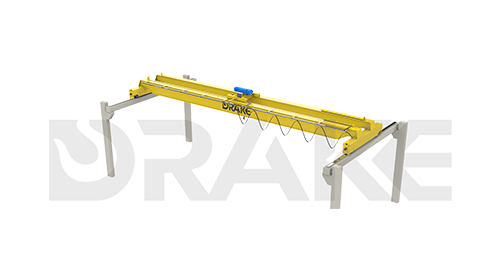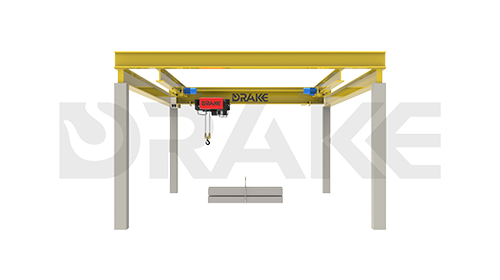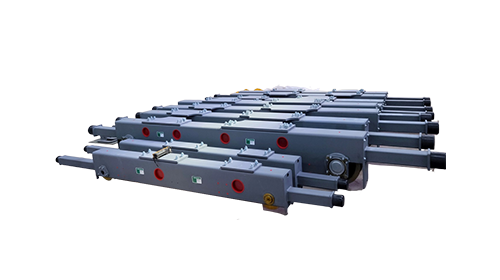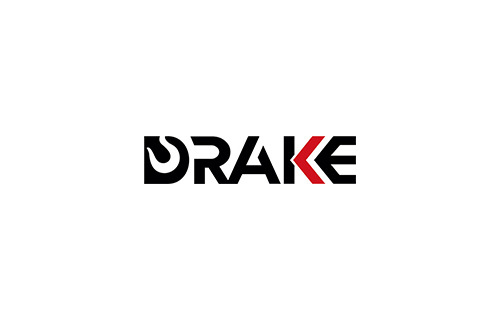Crane Safety Hazard Inspection (With References): Focus on These 15 Items
Mar 10,2025
1. Regular Inspection
Inspection Item: Check whether the crane is inspected regularly as required.
Reference:
- TSG51-2023 Crane Safety Technical Code, Article 6.4.2
- Inspection Frequency:
- Tower cranes, lifts, mobile cranes, and cable cranes: once a year;
- Overhead cranes, gantry cranes, portal cranes, derrick cranes, and mechanical parking equipment: once every 2 years.
- Inspection Frequency:
2. Certified Operators
Inspection Item: Verify whether the operators hold the appropriate special equipment operation certificates.
Reference:
- TSG Z6001-2019 Rules for Special Equipment Operators' Assessment, Appendix J
- Operators of overhead cranes, tower cranes, etc., must obtain a Special Equipment Operation Certificate.
- Ground operators and remote control operators should be trained and managed in accordance with the rules.
3. Wire Rope Splicing Length
Inspection Item: Check whether the wire rope splicing length meets the following requirements:
- General Machinery: Splicing length should not be less than 15 times the diameter of the wire rope and no less than 300 mm;
- Construction Machinery: Splicing length should not be less than 20 times the diameter of the wire rope and no less than 300 mm.
Reference:
- GB6067.1-2010 Crane Safety Code, Article 4.2.1
- JGJ33-2012 Technical Code for Safe Use of Construction Machinery, Article 4.1.26
4. Wire Rope Clips
Inspection Item: Check whether the number of wire rope clips is at least 3, the spacing is 6-7 times the diameter of the wire rope, and the length from the last clip to the rope end is greater than 140 mm.
Reference:
- GB6067.1-2010 Crane Safety Code, Article 4.2.1.5
- JGJ33-2012 Technical Code for Safe Use of Construction Machinery, Article 4.1.26
5. Wire Rope Scrap Standards
Inspection Item: Check whether the wire rope has broken strands, burrs, rust, bends, or other conditions that meet the scrapping criteria.
Reference:
- GB/T5972-2009 Maintenance, Installation, Inspection, and Scrap Standards for Crane Wire Ropes, Article 3.5
6. Anti-Derailment Measures
Inspection Item: Check whether single-girder cranes have anti-derailment measures for wire ropes.
Reference:
- GB6067.1-2010 Crane Safety Code, Article 4.2.5.1
7. Hoist Height Limiter
Inspection Item: Check whether the crane is equipped with a hoist height limiter.
Reference:
- GB6067.1-2010 Crane Safety Code, Article 9.2.1
8. Anti-Unhooking Device
Inspection Item: Check whether the lifting hook is equipped with an anti-unhooking device.
Reference:
- GB6067.1-2010 Crane Safety Code, Article 4.2.2.3
9. Overload Limiter
Inspection Item: Check whether cranes with a capacity of 1 ton or more are equipped with an overload limiter.
Reference:
- GB6067.1-2010 Crane Safety Code, Article 9.3.1
10. Load Capacity Label
Inspection Item: Check whether the crane has a clear and permanently fixed load capacity label.
Reference:
- GB6067.1-2010 Crane Safety Code, Article 10.1.1
11. Warning Signs
Inspection Item: Check whether warning signs such as "No Standing Under Load" and "Beware of Suspended Loads" are posted at the work site.
Reference:
- Work Safety Law of the People's Republic of China, Article 35
12. Buffer Device
Inspection Item: Check whether the crane's trolley or runway mechanism is equipped with a buffer device.
Reference:
- GB6067.1-2010 Crane Safety Code, Article 9.2.10
13. Hook Wear
Inspection Item: Check whether the hook wear exceeds 5% of its original size, meeting the scrapping criteria.
Reference:
- GB/T10051.3-2010 Inspection for Forged Hooks, Article 3.2.3
14. Anti-Collision Device
Inspection Item: Check whether multiple cranes operating on the same track are equipped with anti-collision devices.
Reference:
- GB6067.1-2010 Crane Safety Code, Article 9.2.9
15. Emergency Stop Device
Inspection Item: Check whether the crane is equipped with an emergency stop device that operates reliably.
Reference:
- GB6067.1-2010 Crane Safety Code, Article 9.2.4
Conclusion
The safety management of cranes is a critical aspect of ensuring safe production. Regular inspections, strict adherence to standards, and proper operation can effectively reduce safety risks and ensure a safe working environment.













